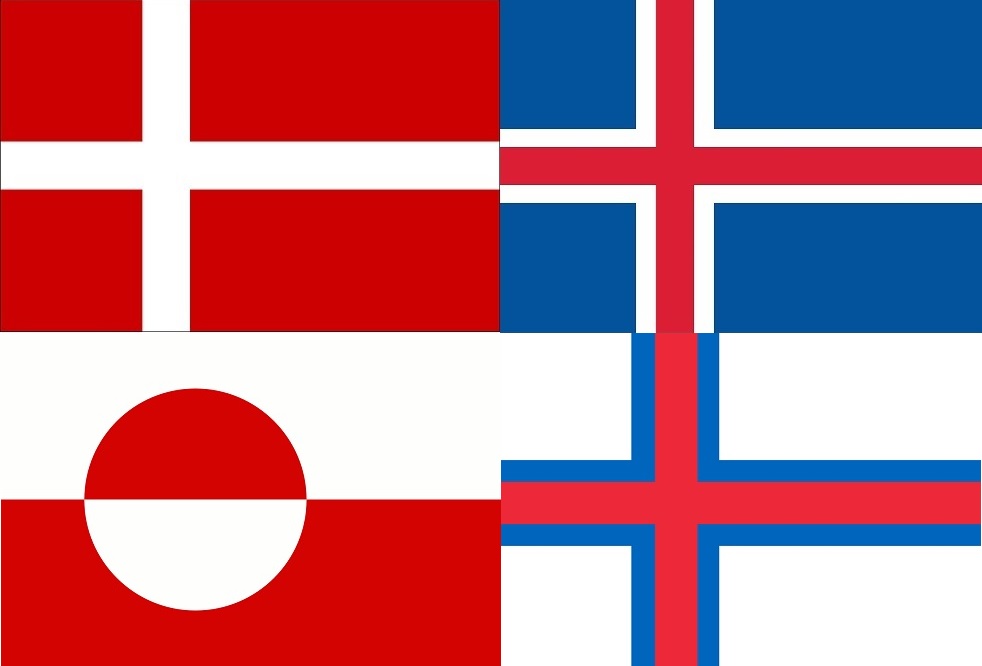
Sources from: https: www.abo.fi/wpcontent/uploads/2020/06/3.-Olaus-Magnus-1539. jpg, https: //de. depositphotos.com/stock-photos/whales.html, and https://www. pinterest.ch/pin.
You are surely familiar with masculinity, but do you know about the concept of “hypermasculinity“? Britannica Encyclopaedia explains hypermasculinity, but it does not mention colonialism, however the Encyclopaedia of Race and Crime (Craig, 2009, pp. 2-4) does. According to Craig:
„The term hypermasculinity is believed to have been established by Ashis Nandy in her writings on colonialism and gender in the 1980s. The term is widely used in the social science and has evolved in meaning, but no standard definition exists.“
Craig, 2009, p. 2
Craig also refers to Mosher (1991) who claims that hypermasculinity is shown through characteristics such as violent behaviour, love of danger, excitement and sensationalism, and showing callous behavior towards women. For example, in the film The Birth of a Nation (Griffith 1915) both black and white males are put in a hypermasculine context (Craig 2).
Hypermasculinity can be recognized in expeditions to ‘Finna land’, ‘Samlandi’ and ‘Kvenland’ (today’s Lapland) in the Old English Beowulf and Widsith, and Old Norse Vatnsdæla saga and Flateyjarbók.
There is ambiguity in the term lapp, as I can translate it from Swedish to Finnish as paikka, meaning ‘a place’ or ‘a patch’ (cf. Hurme et. al. 1984). In the last chapter of Flateyjarbók Earl Gizurr travelled to the Sami in “Samlandi” (Nordal IV 1944, p. 322; cf. “Samr ok Semingr” (Nordal Vol. II 1944, p. 9). Previous research shows that during the Medieval Ages there were various designations for Finns: Aalto (2003, p. 2) finds Finni, Fidr and finnr (pl.) in Heimskringla. Pálsson (1999, pp. 30-31) names Finni, Finnr (m.), Finnar (pl.) (Sámi people), Finna (f.), Finnur (pl.) (Sami women), and Old English Finnas and Finnar refers to Sámi or ‘the inhabitants of Finland’, and Pálsson finds that hálffinnar, Lappir (pl.) refer to Sámi in Flateyjarbók.
In Beowulf, Finns are mentioned when Beowulf meets the Danes at Heorot’s hall and brags about a swimming race against Breca, who was carried from the land of the Broodings’ to the coast of the Heatho-Ræmas in central Norway. Beowulf went even further north:
“Þa mec sæ oþbær, flod æfter faroðe on Finna land, wadu weallendu.” [‘Then the sea, the flood with its currents, the surging waters, carried me away to the land of the Lapps’].
Swanton lines 579-581; pp. 59-61
This excursion illustrates the courage and sensationalism of taking part in such races. The translations of Finna land show ambiguity, as Swanton translates „Finna land“ to “the land of the Lapps”, in Sweden and Finland (208), and Heaney translates “Finna land” as “the coast of Finland” (Heaney 39).
Widsith shows hypermasculinity by skiing with Finns. Widsith tells the story of a wandering minstrel. Chambers says:
“Widsith – “Farway” – the ideal wandering minstrel, [mentions] tribes among which he has sojourned, all the chieftains he has known.”
Chamers, 1912, p. 4
Widsith visits Swedes, Danes, and Finns of the north (7). He meets “Becca Baningum […] Casere weold Creacum ond Cælic Finnum” (lines 18-20; pp. 191-2). Here Becca is a prince. With regards to the “Celtic Finns”, Chambers quotes Heinzel “this is a corrupt form of Kalew” (cf. Heinzel, 1886, p. 507; here Chambers 192). One could relate Kalew to Kalevala the Finnish epos (Elias Lönnrot 1835; cf. Moster, 2016, p. 255). Widsith mentions being with the Finns:
“Mid Creacum ic wæs ond mid Finnum ond mit Casere (line 76) […] (‘With the Greeks I was and with the Finns, and with Casere’ […]’), furthermore, “[…] mid Scride-Finnum” (line 79 ‘the sliding Finns’).
Chamers, 1912, p. 212
The skiers lived in the north of Norway rather than Finland in (213). Taking part in new sports, such as, skiing with ‚the sliding Finns‘ shows hypermasculinity.
Vatnsdæla saga shows encounters with Finns. Ingimundr and Grimr meet with a skilled sorceress, a Finn who tells them to emigrate to Iceland (Ásmundarson, pp. 26-27). When Ingimundr arrives in Vatnsdals he says:
“Sú mun sannast spáin Finnanna, því at nú kenni ek landsleg at frásögn þeirra, at hér mun oss at vísat, […] at hér sé vel byggjanda” [‘It is truly like the Finnish sorceress said […], that here is a good place to live,’ transl. Ann-Christin Ravald (ACR)].
Ásmundarson, 1893, p. 37
Here, Ingimundr is conquering Iceland, and becoming one of the first landowners there, a hypermasculine thing to do.
Fundinn Noregr, in Flateyjarbók, (Nordal 1944: Vol. I. 241-290) begins:
“Fornjótr hefir konungr heitit. Hann réð fyrir því landi, er kallat er Finnland ok Kvenland.” [‘Fornjótr was the name of the king. He ruled over the countries called Finland and Kvenland.’ ACR.
Nordal, 1944 (1), p. 241
The brothers Nórr and Górr, “bræðra var fjölmennr” [‘the brothers of the arctic mountains’, ACR].(241), explore new territories. Górr sails to “Álandshaf”, whereas Nórr, who “lagði á heiðar ok skíðfæri gerðt gott” [‘was a heathen and a good skier’, ACR.] (241), goes to Kvenland,[1] north of Finnmark, to meet with “Lappir” (241). The myth explains that Nórr goes in search of his sister to Upplanda and Heiðmörk, where konungr Hrólfr rules, and who had kidnapped Gói (242). Nórr and the king have a meeting where they exchange products – women! Nórr gifts Gói to the king in exchange for Hrólfr’s sister (242):
“Eftir þat sættust þeir, ok fékk Nórr systur Hrólfs, en Hrólfr fékk Gói. Þaðan sneri Nórr after norðr til ríkis þess, er hafði under sik lagt. Þat kallaði han Norveg” [‘Then Nórr went north to [Fornjótr’s] kingdom, which he took over. He named it Norway’, transl. ACR.]
Nordal, 1944 (1), p. 243
Later Górr conquers Orkney (247). Spivak (1996) refers to the method of nominalism to show power and hierarchy (cf. Said, 1993, p. 193), like Nórr baptizing Norway. The women, except for sorceresses, can be considered subordinate, as they do not have a voice. Spivak claims that the “subalterns” do not have a voice, as they have not left any official history behind (203).
In “Frá Ólafi”, King Ólafr (Vol. II: 1944, pp. 86-88) meets “Finnar” and “Finnlendingar” on an excursion to Finland. Before sailing to Denmark, the king’s men capture a sorceress. Sighvatr poem mentions:
“Finnlendigar funde Balagardz at barde” [‘Finlanders were found on the ship Balagardz’, transl. ACR.]
Nordal, 1944 (2), p. 87
The word Finnlendigar suggests that the men met Swedish-speaking Finlanders. Hypermasculinity was shown in the callous behaviour of men kidnapping women.
These Old English and Old Norse myths show how hypermasculinity was established to construct ideologies. Beowulf explored Finna land, Widsith met Scride-Finnum, and in Flateyjarbók, Ingemundr received courage from a Finn to emigrate to Iceland. Moreover, men exchanged women as goods, treating them as subordinate. Nórr demonstrates authority by naming Norway. Overall, hypermasculinity is evident in these myths.
[1] “Kvenland.” Nationalencyklopedin, Kvänland. http://www.ne.se/uppslagsverk/encyklopedi/lång/kvänland. Web. December 30, 2020.
References
Primary literature
Beowulf. Revised Edition. Edited with an Introduction, Notes and New Prose Translation by Michael Swanton. Manchester University Press, [1982] 1997.
Beowulf. A New Verse Translation By Seamus Heaney. Bilingual Edition. W.W. Norton & Company, 2000.
Flateyjarbók. Volume I, II, III, IV. Sigurður Nordal. Printverk Akraness H. F., 1944.
Vatnadæla saga. Valdimar Ásmundarson. Reykjavík: Sigurður Kristjánsson, 1893.
Widsith. Chambers, R. W. (ed.). Widsith: A Study in old English Heroic Legend. Cambridge University Press, 1912.
Secondary literature
Aalto, Sirpa: „Alienness in Heimskringla. Special Emphasis on the Finnar„. In: Rudolf Simek/Judith Meurer (Hg.): Scandinavia and Christian Europe in the Middle Ages. Bonn: Universität Bonn, 2003, pp. 1-7. Web.
Craig, Roland. „Hypermasculinity.“ In: Encyclopaedia Encyclopaedia of Race and Crime. (Eds.) Helen Taylor Greene & Shaun L. Gabbidon. Thousand Oaks: SAGA Publications, 2009, pp. 2-4. Web.
Hurme, Raija. Syväoja, Malin. Syväoja, Olli. Uusi Suomi-Englanti-Suur Sanakirja. WSOY, 1984.
Mosher, D. L. „Macho Men, Machismo, and Sexuality„. In: Annual Review of Sex Research, Vol. 2 (1), 1991, pp. 199-247. Web.
Moster, Stefan. “Finnische Literatur.” In: Jürg Glauser (ed.) Skandinavische Literaturgeschichte. J.B. Metzler Verlag: Stuttgart. 2016, pp. 445-487.
Pálsson, Hermann. Oral tradition and saga writing. Wien: Fassbaender 1999. Web.
Said, Edward. Culture and Imperialism. Chatto, 1993.
Spivak, Gayatri Chakravorty: The Spivak Reader. Routledge, 1996.

